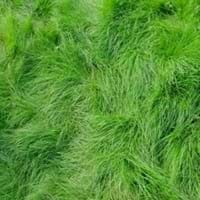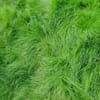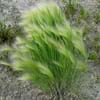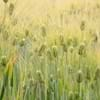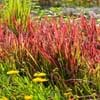Life Span
Perennial
Annual
Origin
World/Pandemic, North America, Europe
Central America, South America
Types
Lustrous Creeping Red Fescue, Rubra trichophylla, Rubra rubra
Bush Beans, Pole Beans
Number of Varieties
Not Available
Habitat
Wide range of ecological site
Cultivated Beds
USDA Hardiness Zone
2-7
Not Available
AHS Heat Zone
7 - 1
Not Available
Sunset Zone
A2, A3, 1a, 1b, 2a, 2b, 3a, 3b, 4, 5, 6, 7, 8, 9, 10, 14, 15, 16, 17, 18, 19, 20, 21, 22, 23, 24
A1, A2, A3, H1, H2, 1a, 1b, 2a, 2b, 3a, 3b, 4, 5, 6, 7, 8, 9, 10, 11, 12, 13, 14, 15, 16, 17, 18, 19, 20, 21, 22, 23, 24
Habit
Mat-forming
Vining/Climbing
Minimum Width
Not Available
Flower Color
Not Available
Lavender
Flower Color Modifier
Bicolor
Bicolor
Fruit Color
Not Available
Purple
Leaf Color in Spring
Dark Green
Green, Purple
Leaf Color in Summer
Light Green
Green
Leaf Color in Fall
Dark Green
Green
Leaf Color in Winter
Tan
Not Available
Leaf Shape
Grass like
Oval
Plant Season
Spring, Summer, Fall, Winter
Spring, Summer, Fall
Sunlight
Full Sun, Partial Sun, Partial shade
Full Sun
Type of Soil
Clay, Loam, Sand
Loam, Sand
The pH of Soil
Acidic, Neutral
Neutral, Alkaline
Soil Drainage
Average
Well drained
Bloom Time
Early Summer, Summer, Late Summer
Indeterminate
Tolerances
Not Available
Drought
Where to Plant?
Ground
Container, Ground, Pot
How to Plant?
From Rhizomes
Seedlings
Plant Maintenance
Medium
Medium
Watering Requirements
Needs 2-3 times watering per week
Do Not over Water, Requires regular watering, Water evenly
In Summer
Lots of watering
Lots of watering
In Spring
Moderate
Moderate
In Winter
Average Water
Average Water
Soil pH
Acidic, Neutral
Neutral, Alkaline
Soil Type
Clay, Loam, Sand
Loam, Sand
Soil Drainage Capacity
Average
Well drained
Sun Exposure
Full Sun, Partial Sun, Partial shade
Full Sun
Pruning
Prune grass to maintain level
Remove damaged leaves, Remove dead branches, Remove dead leaves
Fertilizers
fertilize in fall
5-10-10 fertilizer
Pests and Diseases
Billbugs, Dollar spot, Pythium blight, Red blotch, Red thread, White grubs
Alternaria Leaf Spot, Anthracnose, Aphids, Armyworm, Bacterial Blight
Plant Tolerance
Not Available
Drought
Flowers
Insignificant
Showy
Flower Petal Number
Single
Single
Foliage Texture
Fine
Coarse
Foliage Sheen
Matte
Matte
Attracts
Bugs
Not Available
Allergy
Asthma
Not Available
Aesthetic Uses
Ground Cover
Not Available
Beauty Benefits
Not Available
Beautiful Skin
Environmental Uses
Erosion control, Wildlife
Fixes Nitrogen
Medicinal Uses
Not Available
Cancer, Diuretic, Homeopathy, Hypotensive, Miscellany
Part of Plant Used
Whole plant
Leaves, Seedpod, Seeds
Other Uses
Used as Ornamental plant
Used for making brown dye, Used in biomass, Used in in reviving woollen fabrics
Used As Indoor Plant
No
Yes
Used As Outdoor Plant
Yes
Yes
Garden Design
Edging, Groundcover, Lawns and Turf, Mixed Border, Rock Garden / Wall
Container, Edible, Herb, Vegetable, Vine
Botanical Name
FESTUCA rubra
PHASEOLUS vulgaris 'Purple King'
Common Name
Red Fescue
String bean, Field bean, French bean
In Hindi
Red Fescue
String Bean
In German
Rotschwingel
Bohne
In French
fétuque rouge
Haricot vert
In Spanish
festuca roja
String Bean
In Greek
κόκκινο Φεστούκα
Αμπελοφάσουλο
In Portuguese
Red festuca
Feijão de corda
In Polish
Kostrzewa czerwona
Fasolka szparagowa
In Latin
Red Fescue
Gloria Bean
Phylum
Magnoliophyta
Magnoliophyta
Class
Liliopsida
Magnoliopsida
Clade
Angiosperms, Commelinids, Monocots
Angiosperms, Eudicots, Rosids
Tribe
Not Available
Phaseoleae
Subfamily
Not Available
Faboideae
Number of Species
Not Available
Not Available
Importance of Red Fescue and String Bean
Want to have the most appropriate plant for your garden? You might want to know the importance of Red Fescue and String Bean. Basically, these two plants vary in many aspects. Compare Red Fescue and String Bean as they differ in many characteristics such as their life, care, benefits, facts, etc. Every gardener must at least have the slightest clue about the plants he wants to plant in his garden. Compare their benefits, which differ in many ways like facts and uses. The medicinal use of Red Fescue is Not Available whereas of String Bean is Cancer, Diuretic, Homeopathy, Hypotensive and Miscellany. Red Fescue has beauty benefits as follows: Not Available while String Bean has beauty benefits as follows: Not Available.
Compare Facts of Red Fescue vs String Bean
How to choose the best garden plant for your garden depending upon its facts? Here garden plant comparison will help you to solve this query. Compare the facts of Red Fescue vs String Bean and know which one to choose. As garden plants have benefits and other uses, allergy is also a major drawback of plants for some people. Allergic reactions of Red Fescue are Asthma whereas of String Bean have Not Available respectively. Having a fruit bearing plant in your garden can be a plus point of your garden. Red Fescue has no showy fruits and String Bean has showy fruits. Also Red Fescue is not flowering and String Bean is not flowering . You can compare Red Fescue and String Bean facts and facts of other plants too.
